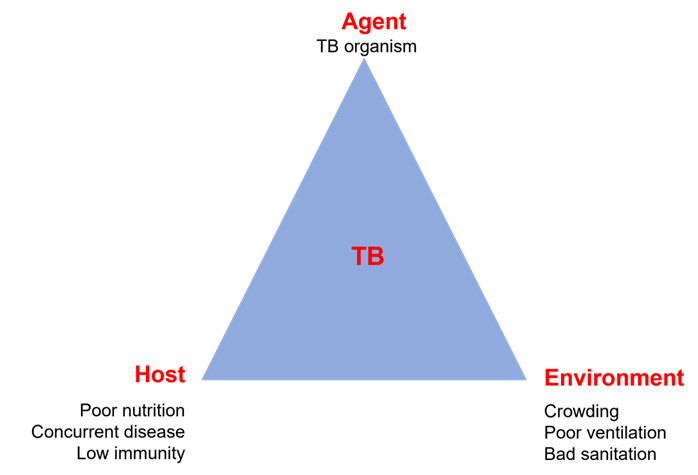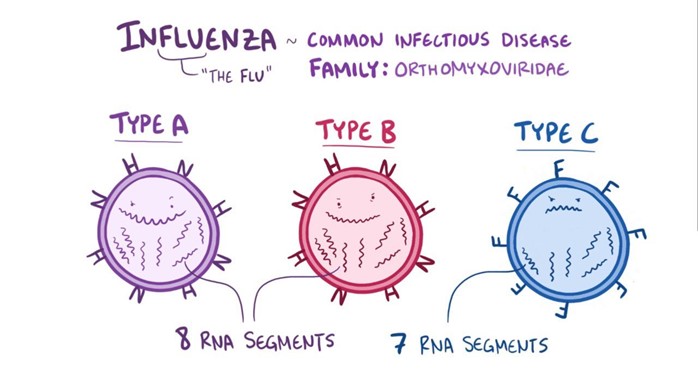The community health nurse utilizes which of the following approaches to explain the factors that allow the reproduction and spread of infectious disease?
Natural history of disease
Health promotion
Levels of prevention
Epidemiologic triangle
The Correct Answer is D
Choice A reason: Natural history of disease is not an approach that explains the factors that allow the reproduction and spread of infectious disease. Natural history of disease is a concept that describes the progression and outcome of disease in the absence of any intervention. It includes stages such as susceptibility, exposure, incubation, prodrome, clinical, recovery, disability, or death.
Choice B reason: Health promotion is not an approach that explains the factors that allow the reproduction and spread of infectious diseases. Health promotion is a process that enables people to increase control over and improve their health. It involves strategies such as education, advocacy, policy, or community development.
Choice C reason: Levels of prevention is not an approach that explains the factors that allow the reproduction and spread of infectious disease. Levels of prevention is a framework that classifies different types of interventions based on their timing and purpose. It includes primary prevention (before disease occurs), secondary prevention (early detection and treatment), and tertiary prevention (reducing complications and disabilities).
Choice D reason: Epidemiologic triangle is an approach that explains the factors that allow the reproduction and spread of infectious disease. Epidemiologic triangle is a model that identifies three essential components of an infectious disease: agent (the microorganism that causes the disease), host (the person or animal that is infected), and environment (the physical, biological, or social factors that influence the transmission). The interaction and balance among these components determine the occurrence and spread of an infectious disease.

Nursing Test Bank
Naxlex Comprehensive Predictor Exams
Related Questions
Correct Answer is B
Explanation
Choice A reason: Discipline in the school setting for improper handwashing is not an appropriate action by the nurse, as it may not prevent the spread of influenza or promote healthy behaviors. Influenza is a viral infection that affects the respiratory system and can be transmitted by direct or indirect contact with respiratory droplets from an infected person. Handwashing is one of the most effective ways to prevent the transmission of influenza and other infectious diseases, but it requires proper technique, frequency, and duration. The nurse should not punish or blame the students for their handwashing habits but rather educate and encourage them to wash their hands with soap and water for at least 20 seconds, especially before and after eating, after using the bathroom, after coughing or sneezing, and after touching potentially contaminated surfaces.
Choice B reason: Education regarding respiratory and hand hygiene is an appropriate action by the nurse, as it helps to prevent the spread of influenza and promote healthy behaviors. The nurse should provide accurate and relevant information to the students, staff, and parents about the causes, symptoms, prevention, and treatment of influenza. The nurse should also teach and demonstrate proper respiratory and hand hygiene practices, such as covering the mouth and nose with a tissue or elbow when coughing or sneezing, disposing of used tissues in a trash can, washing hands frequently with soap and water or using alcohol-based hand sanitizer, avoiding touching the eyes, nose, and mouth, and staying away from sick people.
Choice C reason: Running a mandatory flu clinic is not an appropriate action by the nurse, as it may not be feasible, ethical, or effective in preventing influenza. Influenza vaccination is one of the best ways to prevent influenza and its complications, but it requires informed consent, adequate supply, trained personnel, and appropriate timing. The nurse cannot force or coerce anyone to receive the flu vaccine without their permission or against their wishes. The nurse should respect the autonomy and preferences of the students, staff, and parents, and provide them with evidence-based information about the benefits and risks of influenza vaccination. The nurse should also collaborate with the health department and other community partners to organize voluntary flu clinics that are accessible, affordable, and convenient for those who want to receive the vaccine.
Choice D reason: Closing the school for 6 weeks is not an appropriate action by the nurse, as it may not be necessary, practical, or beneficial in preventing influenza. Influenza outbreaks can vary in severity, duration, and impact depending on several factors, such as the strain of the virus, the level of immunity in the population, the availability of vaccines and antiviral medications, and the implementation of preventive measures. The nurse should monitor the situation closely and follow the guidance of the health authorities regarding school closure decisions. The nurse should also consider the potential consequences of school closure on the student's education, socialization, nutrition, safety, and mental health. The nurse should weigh the benefits and harms of school closure against other alternatives, such as increasing ventilation, cleaning and disinfecting surfaces, screening for symptoms, isolating sick students or staff members, reducing class size or mixing groups.

Correct Answer is D
Explanation
Choice A reason: Providing total assistance with all ADLs is not an intervention that should be included in the client's plan. ADLs are activities of daily living, such as bathing, dressing, eating, and toileting. Providing total assistance with all ADLs can reduce the client's independence and self-esteem, and increase their dependence and learned helplessness. The nurse should encourage and assist the client to perform as much as they can by themselves and provide partial or intermittent assistance only when needed.
Choice B reason: Ordering a low-residue diet is not an intervention that should be included in the client's plan. A low-residue diet is a type of diet that limits foods that are high in fiber or indigestible material, such as whole grains, nuts, seeds, fruits, and vegetables. A low-residue diet may be recommended for clients who have inflammatory bowel disease (IBD), diverticulitis, or bowel obstruction, as it can reduce bowel frequency and irritation. However, it is not indicated for clients who have MS, unless they have other comorbidities that require it. A balanced diet that includes adequate fiber, fluids, and nutrients is more beneficial for clients who have MS.
Choice C reason: Encouraging the client to void every hour is not an intervention that should be included in the client's plan. Voiding every hour can be inconvenient and impractical for the client, and may not address their bladder problems effectively. MS can cause bladder dysfunction, such as urinary urgency, frequency, incontinence, or retention, due to nerve damage that affects bladder control. The nurse should assess the type and severity of the bladder dysfunction, and provide appropriate interventions, such as medication, catheterization, pelvic floor exercises, or bladder training.
Choice D reason: Instructing the client on daily muscle stretching is an intervention that should be included in the client's plan. Muscle stretching is a type of exercise that involves extending or elongating a muscle or group of muscles to their full length. Muscle stretching can help prevent or relieve muscle spasticity, stiffness, pain, or contractures that may occur in clients who have MS. The nurse should teach the client how to perform muscle stretching safely and correctly, and encourage them to do it daily or as prescribed.

Whether you are a student looking to ace your exams or a practicing nurse seeking to enhance your expertise , our nursing education contents will empower you with the confidence and competence to make a difference in the lives of patients and become a respected leader in the healthcare field.
Visit Naxlex, invest in your future and unlock endless possibilities with our unparalleled nursing education contents today
Report Wrong Answer on the Current Question
Do you disagree with the answer? If yes, what is your expected answer? Explain.
Kindly be descriptive with the issue you are facing.
